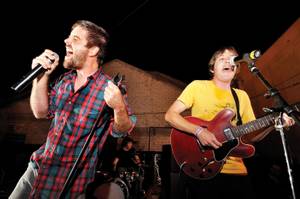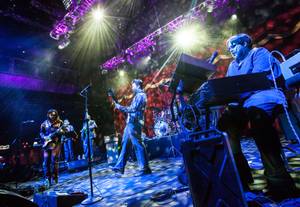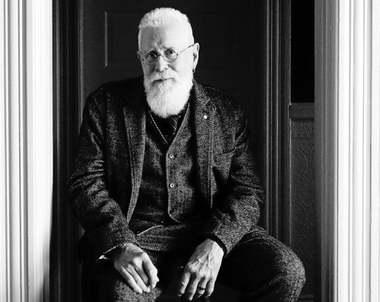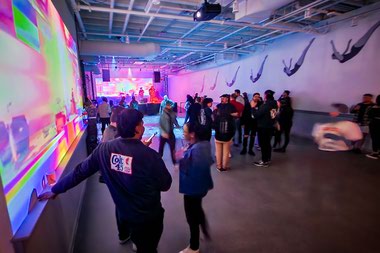At the moment, the four men of Moksha are on the home stretch of album No. 3, a project pegged for a late fall or winter release and slated to include sax and horns from a collection of heavy hitters: Skerik, Peter Apfelbaum, Jennifer Hartswick, Jeff Cressman and Eddie Rich. “It sounds fantastic so far, very open and natural, and we’re really proud of it,” drummer Pat Gray says.
Since launching eight years ago, however, Moksha’s bread and butter has always been its live show—earning the funky jam quartet a reputation for delivering unique, gripping performances. We sat down with Gray and delved into process, to learn how the freewheeling group stays so deeply in its groove.
1. Make plans—and be ready to change them. “Our sets are always different, and we always have at least one new song for each show. We usually have the songs laid out in order, and then we have a big list of alternate songs, because depending how the set’s going—the energy and vibe of the crowd—the next [planned] song may not work. If we’re in a big dance groove and everyone’s having a great time, someone might call an audible to keep it funky. We’re nimble enough to be able to make those quick left turns to keep the party going.”
2. Create a plotline. “Each song has a story—a beginning, a middle and an end—but the collection of songs in a set has to make sense as well. It doesn’t always have to be the same: We can start big and end big, or start quiet and do a big ramp-up to the end, or end quiet. We just followed Big Sam’s Funky Nation, a hard-hitting dance-funk band, and we obviously couldn’t start soft, because we would get totally dwarfed. We had to match the intensity and then drive that intensity where we wanted it.”
3. Be your own critic. “We record most of our shows, and then we listen back in real time, without fast-forwarding, so we know exactly what the audience was experiencing. For some of our early shows, there’d be like a minute between songs while everyone was adjusting, so we worked on making those transition times shorter.”
4.Move past mistakes. “Improvisational music is art that exists in time; it’s not like a painting that exists forever. Once that moment is over, you have to let it go, because if you make a mistake and it gets in your head, it’s just gonna compound.”
The Music Issue
- Vegas music notables gush about their all-time favorite shows
- Can Vegas take its music festival surge any further?
- A big fat timeline of Vegas music festivals
- For veteran Vegas improv band Moksha, live greatness is no accident
- Notable bands that have—and haven't—played Las Vegas
- Concert calendar: Solid shows to catch in Las Vegas through the year's end
5. Think beyond the genre box. “With our covers, it’s totally anything-goes. One time we did the theme from Fraggle Rock. We get serious sometimes, get in these long, extended things, so it’s nice to have some levity in the set as well. James Brown was the theme at the For the Funk of It Festival last month, so we pulled out “Make It Funky,” and then we did a play on the old Eddie Murphy impression on Saturday Night Live about the hot tub. We did a Soul Train thing during that—we asked the audience to split and make an aisleway, and had a dance-off.”
6. Read the crowd. “We’ve learned that certain areas of the country like different things. In the Denver area people want that dance vibe, whereas a lot of our Pacific Northwest fans like the really out stuff, so we give ourselves more permission to go super out when we’re there.”
7. Read your bandmates. “Being together as a group for so long, you get to know each other really well musically. It’s a million split-second decisions occurring the entire set, and when you’re flying by the seat of your pants, sometimes you can fail. But once you get out on the ledge, that’s really where it’s fun. Playing the same songs, the same way gets boring real fast.”
Las Vegas Weekly Music Issue Showcase featuring Moksha, Bee Master, Cameron Calloway.September 12, 7-10 p.m., free. Hard Rock Live, RSVP at lasvegasweekly.com/musicissue









